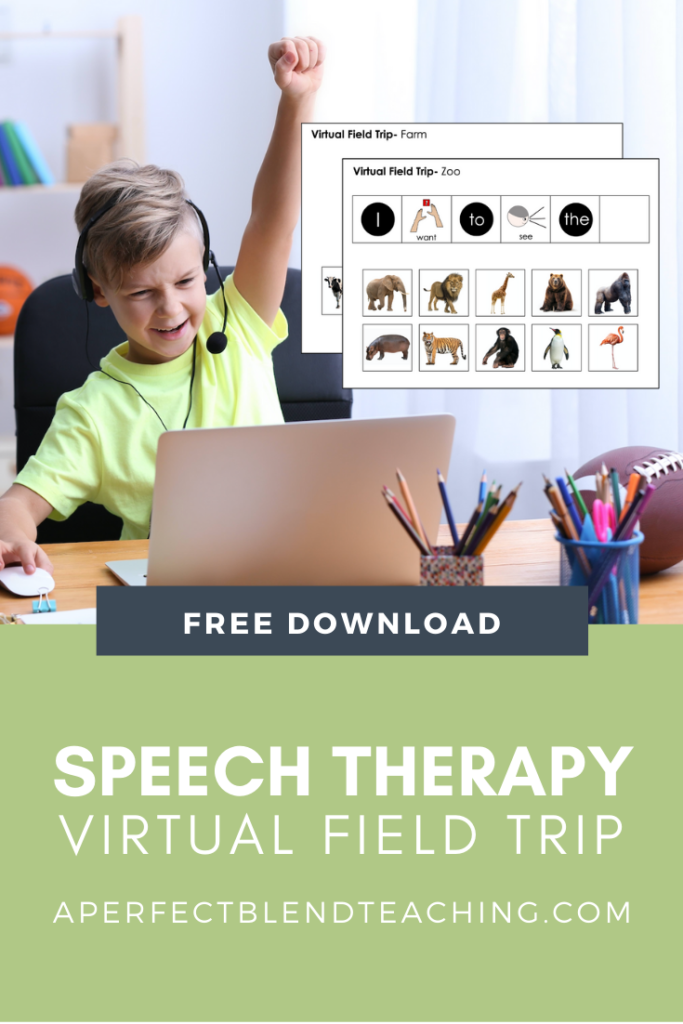Finding new ways to facilitate virtual speech therapy sessions can be challenging. These activities provide several opportunities to develop functional communication skills. With these sessions, there is little to no prep and your students will be actively engaged. Sound like a win, win? Yes! These activities can also be completed with your students that are face-to-face as well.

Take a Virtual Field Trip
There are several zoos, farms and aquariums that offer students the opportunity to virtually tour their facilities. During these tours, there are a variety of opportunities to support your students’ language development.

Here are a few locations that are offering virtual field trips:
Asking/Answering Wh- Questions
- Where do the animals live?
- Who takes care of the animals?
- What do the animal eat?
- What are the animals doing?
Describe the Animals- Students can describe the animals they see as you travel through the facility. You can use this describing mat to help support their responses.

Problem Solving- With several students participating in the virtual field trip, they will want to visit different animals and attractions within the facility. Encourage your students to develop a plan that allows all students in the group to see the animals/attractions that interest them.
Making Inferences- You can describe the animals based on various attributes (category, functions, habitat, etc.). You can also prompt students make an inference based on your description (e.g., “I want to see a reptile that is long, sheds its skin and slithers on the ground.”).
Making Requests/Commenting with AAC- Encourage students to make a request to visit the various animals/attractions and also make comments along the way. (e.g., “I want to see the _______, I like the ________, I don’t like the ______”).

Leave your email below and I will send these virtual field trip visual pages directly to you!
Show and Tell
Who doesn’t want to bring their favorite toy to speech? Show and tell provides so many opportunities for functional communication and language. It also keeps your students engaged!

Asking/Answering Wh- Questions
- Did someone give you the item as a gift?
- Where did you get the item?
- Why is this item special to you?
- How long have you had your item?
Social Communication- Students can practice taking turns showing and telling about their item. They can also practice topic maintenance while asking and answering questions.
Describing- Encourage students to describe their item by identifying a variety of attributes (e.g., category, function, size, texture, shape, colors, etc.).
Story Time
Incorporating literature into your sessions, provides opportunities to target several goals with one book.

Answering Wh- Questions- You can probe a variety of wh- questions (who, what, when, where, why) as you are reading to assess listening comprehension. You can use this visual to help support student responses.

Describing- Encourage students to describe the pictures in the story by identifying a variety of attributes (e.g., category, function, size, texture, shape, colors, etc.).
Here are 3 platforms that you can utilize to incorporate books into your therapy sessions.
Vooks- is a kid-safe, ad-free streaming library of read-along, animated storybooks.
Epic- digital library of 40,000 books.
YouTube- use with SafeShare (SafeShare makes it easy to generate web pages containing a video from YouTube or Vimeo, but without any advertisements, annotations, or links to other potentially inappropriate videos.)

If you are looking for more virtual speech therapy resources, you can check out this post on using Boom Cards.


